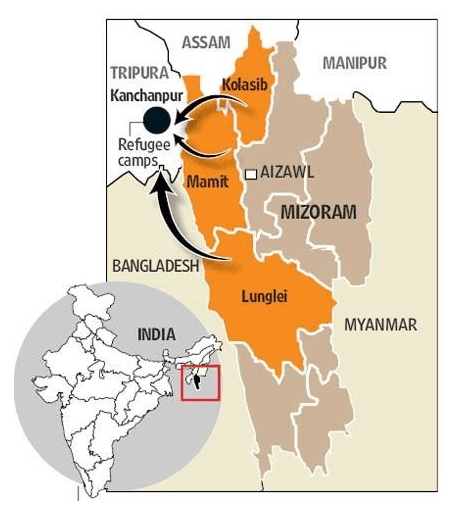UPSC Articles
Governance: Education
General Studies 2:
- Government policies and interventions for development in various sectors and issues arising out of their design and implementation.
- Issues relating to development and management of Social Sector/Services relating to Health, Education, Human Resources.
- Welfare schemes for vulnerable sections of the population by the Centre and States and the performance of these schemes;
ASER lessons: Fix early learning in govt schools
Context:
ASER 2019 shows how poor the quality of education in government schools is even at the foundational levels.
About Annual Status of Education Report (ASER)
- This is an annual survey (since 2005) that aims to provide reliable estimates of children’s enrolment and basic learning levels across rural India ( Statewise and district wise)
- ASER is a household-based rather than school-based survey. This design enables all children to be included – those who have never been to school or have dropped out, as well as those who are in government schools, private schools, religious schools or anywhere else.
- Children in the age group 3 to 16 are surveyed to find out their enrollment status in school or pre-school. Children in the age group 5 to 16 are assessed one-on-one to understand their basic reading and arithmetic abilities.
- It is the largest citizen-led survey in India facilitated by Pratham NGO. It is also the only annual source of information on children’s learning outcomes available in India today
About 2019 report
- The 2019 report focuses on ‘Early Years’ (ages 4-8) since these are critical to later-stage learning
- Overall. More than 90% of young children in the age group of 4-8 year enrolled in some type of educational institution (91.3% at 4 years to 99.5 at 8 years)
- Gender gaps are visible even among these young children with more girls than boys enrolled in government institutions and more boys than girls enrolled in private institutions
- Disparity between Government & Private schools:
- Only 6.7% of government school students in Std I who were aged 4-5 could correctly do early language tasks, this figure was 24.1% for private schools
- Similarly, only 16.5% of 4&5-year-olds in Std I in government schools could demonstrate early numeracy competency, compared with 35.3% in private schools.
- In cognitive skills, too, government institutions lagged their private peers by six to 18 percentage points when performance of 5-year-olds was compared
Implication
- The Right to Education law and the new National Education Policy both set 6 years as the age when a child should enter formal schooling (Standard I)
- Cognitive development in the pre-school years is key to learning outcomes in school.
- Disparity in learning levels: A higher population of 4&5-year-olds study in standard I in government schools (26.1%) compared with private schools (15.7%)—largely because of the lack of affordable and accessible pre-primary institutions—it can be argued, the feedstock in government schools sets them up for the disparity in learning levels.
- High dropout rates at higher level: With the poor learning levels at the primary level (combined with no detention till class 8) many students simply may not be able to cope with the curriculum at the secondary and senior secondary levels thus leading to high dropout rate
Reasons for poor early learning outcomes is primarily two-fold
- India’s Anganwadi scheme: India has one of the largest pre-school care programmes in the world—the Integrated Child Development Services (ICDS), but it remains primarily focussed on nutrition/healthcare/immunisation, with early learning often neglected at the anganwadis.
- Distorted Pedagogy: Content knowledge and instruction us the preferred method when research shows that play-based activities geared towards building memory, reasoning, and problem-solving abilities have a much larger impact on building the foundation for later learning.
Way Ahead:
- Funding: India needs to aggressively bolster its early education programme—in FY20, the Centre budgeted $3.9 billion for the umbrella ICDS programme while in 2017, China was spending nearly $19 billion on just early childhood education
- Reorient Anganwadi centres as not just centres for nutrition but also centres for early learning
- Teaching Pedagogy should be relied more upn play based learning rather than instructional methodology
- Revisit State and National norms for age entry to school: Performance on congnitive, early language, early numeracy, and social & emotional learning tasks is closely related to children’s age, with older children doing better than younger ones. Permitting underage children into primary grades puts them at learning disadvantage which is difficult to overcome
Connecting the Dots
- New Educational Policy
- Operation Digital Board














